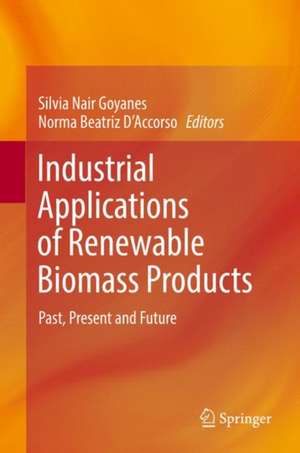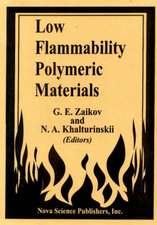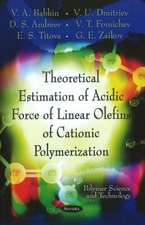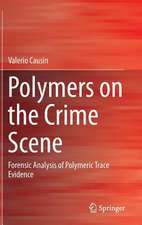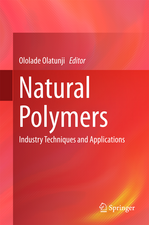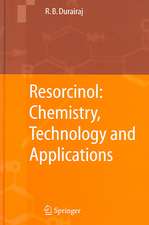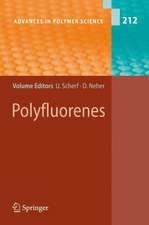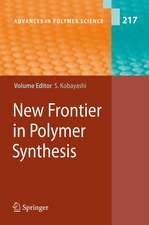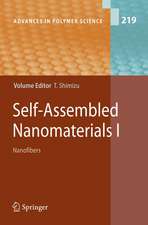Industrial Applications of Renewable Biomass Products: Past, Present and Future
Editat de Silvia Nair Goyanes, Norma Beatriz D’Accorsoen Limba Engleză Hardback – 22 aug 2017
| Toate formatele și edițiile | Preț | Express |
|---|---|---|
| Paperback (1) | 728.91 lei 6-8 săpt. | |
| Springer International Publishing – 11 sep 2018 | 728.91 lei 6-8 săpt. | |
| Hardback (1) | 1116.09 lei 6-8 săpt. | |
| Springer International Publishing – 22 aug 2017 | 1116.09 lei 6-8 săpt. |
Preț: 1116.09 lei
Preț vechi: 1361.08 lei
-18% Nou
Puncte Express: 1674
Preț estimativ în valută:
213.55€ • 222.99$ • 176.35£
213.55€ • 222.99$ • 176.35£
Carte tipărită la comandă
Livrare economică 15-29 aprilie
Preluare comenzi: 021 569.72.76
Specificații
ISBN-13: 9783319612874
ISBN-10: 3319612875
Pagini: 372
Ilustrații: VIII, 332 p. 132 illus., 45 illus. in color.
Dimensiuni: 155 x 235 mm
Greutate: 0.65 kg
Ediția:1st ed. 2017
Editura: Springer International Publishing
Colecția Springer
Locul publicării:Cham, Switzerland
ISBN-10: 3319612875
Pagini: 372
Ilustrații: VIII, 332 p. 132 illus., 45 illus. in color.
Dimensiuni: 155 x 235 mm
Greutate: 0.65 kg
Ediția:1st ed. 2017
Editura: Springer International Publishing
Colecția Springer
Locul publicării:Cham, Switzerland
Cuprins
Chapter 1. Synthesis and applications of carbohydrate-based polyurethanes.- Part 1. Medical Applications: Chapter 2. Biodegradable polymers for bone tissue engineering.- Chapter 3. Industrial Applications of Renewable Biomass Products - Past, Present and Future.- Chapter 4. Innovative systems from clickable biopolymer-Based hydrogels for drug delivery.- Chapter 5. Applications of glycosaminoglycans in the medical, veterinary, pharmaceutical and cosmetic fields.- Chapter 6. Bacterial Cellulose Nanoribbons: A New Bioengineering Additive for Biomedical and Food Applications.- Part 2. Oil Industry: Chapter 7. Biobased additives in oilwell cement.- Chapter 8. Polymers from biomass widely spread in the Oil industry.- Chapter 9. Modified starches used as additives in Enhanced Oil Recovery (EOR). Part 3. Other Applications Related to Environmental Care: Chapter 10. Chitosan: from organic pollutants to high-value polymeric materials.- Chapter 11.
PLA based nanocomposites reinforced with CNC for food packaging applications: from synthesis to biodegradation.- Chapter 12. Removal of Pollutants Using Electrospun Nanofiber Membranes.
PLA based nanocomposites reinforced with CNC for food packaging applications: from synthesis to biodegradation.- Chapter 12. Removal of Pollutants Using Electrospun Nanofiber Membranes.
Recenzii
“Goyanes and D’Accorso (both, Univ. of Buenos Aires, Argentina), along with a cohort of academic and industry research contributors, explore an emerging topic that is broadly compelling: biomass as a renewable, biodegradable source of products for industrial applications. … Summing Up: Recommended. Graduate students, researchers, faculty, and professionals.” (L. W. Fine, Choice, Vol. 55 (10), June 2018)
Notă biografică
1. Prof. Dr. Silvia Goyanes: After getting her PhD in Physics at the University of Buenos Aires (UBA), Argentina, she had a postdoctoral stay at the University of the Basque Country, Spain, under the supervision of Professor Iñaki Mondragon. Since 2005, Silvia has held the position of Professor of Experimental Physics at the Physics Department of the School of Natural and Exact Sciences – UBA and is also head of the Nanomaterials Group. She is also Senior Researcher of the National Research Council (CONICET) and external advisor for YPF-Technology. She specializes in nanostructures and polymer nanocomposite, focusing on the development of biopolymers and biodegradable packaging materials, especially biopolymer-based nanocomposites, packaging materials and active packaging systems. She has published over 90 international peer-reviewed journal articles, 8 international book chapters and is also the inventor of 7 patents (3 PCT and 2 registered in USA). She was granted with the Ibero-American Award for Innovation and Entrepreneurship from the SEGIB (2010) and with the Special Mention of the L’Oreal-CONICET Award for Women in Science (2012).
2. Prof. Dr. Norma B. D’Accorso: Norma B. D’Accorso got her Ph.D. in Chemistry in the Organic Chemistry Department in School of Exact and Natural Sciences of the University of Buenos Aires, Argentina. She is a Full Professor at the Organic Chemistry Department of the School of Exact and Natural Sciences–UBA. She is also a Senior Researcher of National Council of Scientific and Technical Research (CONICET) and External Advisor for YPF-Technology. Dr. D’Accorso is in charge of the Bio-organic Materials Group and her field of Interest is Polymers, Carbohydrates, Heterocycles, Nanomaterials and Biomedical Materials.
She has published over 111 journal articles, six book chapters and various chapters in chemical education. She has leaded numerous research projects. She has 5 national patents and 2 inter
national ones. Currently she is Vice director of the Research Center of Carbohydrates (since 2001).
She has published over 111 journal articles, six book chapters and various chapters in chemical education. She has leaded numerous research projects. She has 5 national patents and 2 inter
national ones. Currently she is Vice director of the Research Center of Carbohydrates (since 2001).
Textul de pe ultima copertă
This book effectively links the latest scientific advances to current technological applications of polymers, mainly focusing on biodegradable polymers obtained from biomass. The individual chapters were written by academic and industry researchers alike, introducing readers to topics that have received little attention in the literature to date. Key topics covered include polymers used in various areas such as food packaging, pharmaceuticals, energy production and the cosmetics industry, as well as the treatment of aqueous effluents.
Caracteristici
Provides a detailed description of polymer applications in biomedicine, from tissue engineering to drug delivery Explores key concepts for bioengineering polymer additives Expands readers’ knowledge of polymers used in the oil industry, wastewater treatment, and packaging, as well as cosmetics Explains scientific concepts essential to research on and application of biopolymers Includes supplementary material: sn.pub/extras
